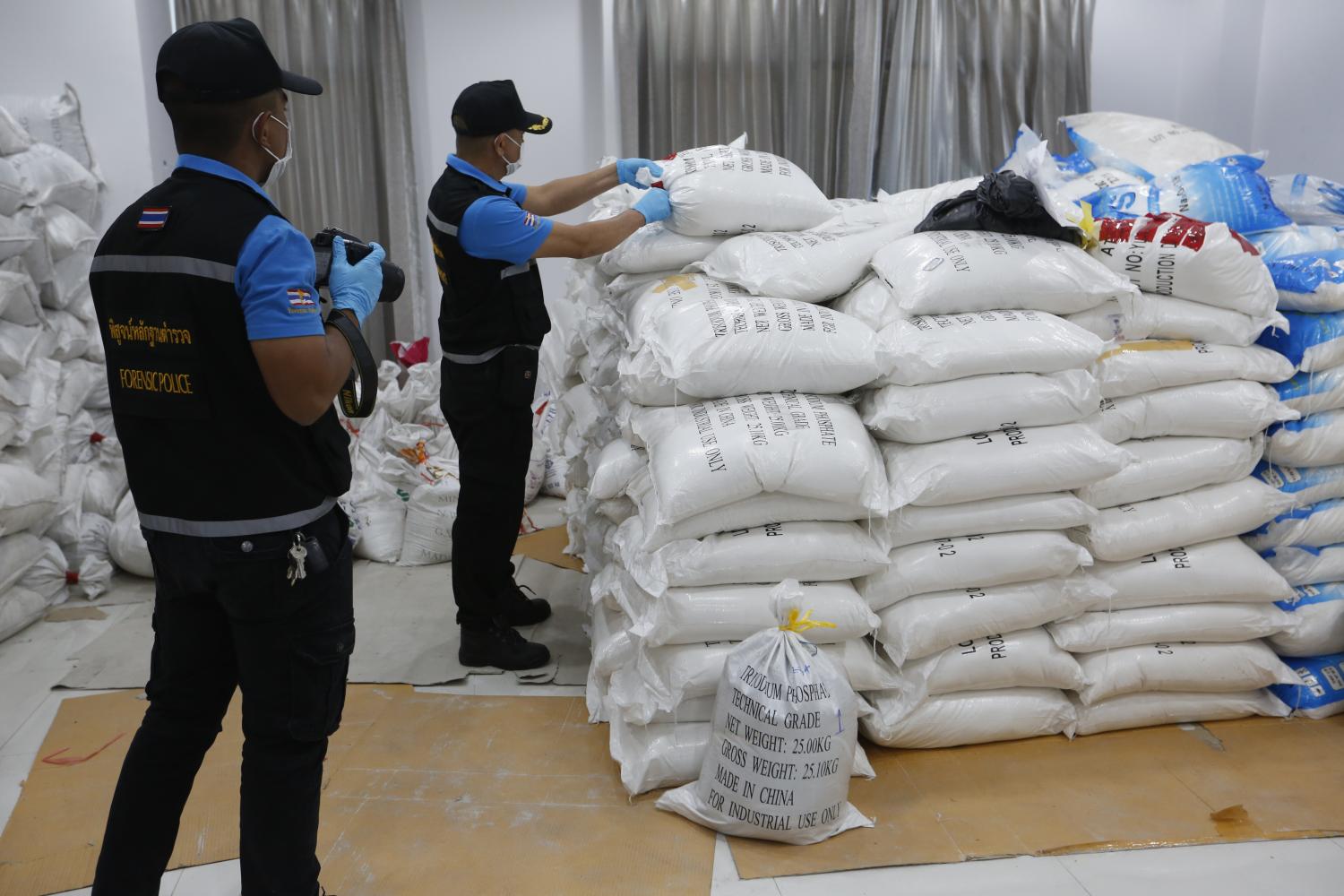
The largest Ketamine bust turned out to be "trisodium phosphate".
Justice Minister Somsak Thepsutin and Wichai Chaimongkol, secretary-general of the Office of the Narcotics Control Board (ONCB), in November announced what was thought to be Thailand's largest ketamine bust worth 30 billion baht from a Chachoengsao warehouse.
In fact, most of the substances found turned out to be trisodium phosphate, a chemical used as a food additive and cleaning agent. Tests ran on the chemicals showed purple, the same colour of ketamine when tested.
The crackdown came after the ONCB was notified about a major ketamine bust in Taiwan and the discovery of a mobile phone linked to a person who rented the Chachoengsao warehouse.
Mr Wichai asked forensics experts from the Department of Medical Sciences, the Narcotics Suppression Bureau and ONCB to run the test again on all confiscated chemicals.
Lab results confirmed that 493 sacks contained 12 tonnes of trisodium phosphate and the rest was calcium carbonate. Only 1.2 grammes of ketamine residue was found.
The ONCB vowed to further investigate the case. It separated the case into two parts: a domestic case to track down those related to the warehouse and an international one looking into the shipment of ketamine to Taiwan.